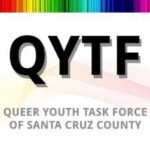
THE HISTORY OF LGBTQ+ HISTORY MONTH
LGBTQ+ History Month is a month-long celebration of the history of the diverse and beautiful lesbian, gay, bisexual, transgender, and queer community and the importance of civil rights movements in progressing gay rights. The observance was created by Rodney Wilson, a history teacher at a Missouri high school, in 1994. The following year, LGBTQ+ History Month was added to the list of commemorative months in a resolution forwarded by the General Assembly of the National Education Association. October was chosen as the month of observance as National Coming Out Day already existed as a holiday on October 11. Also, the anniversary of the first march for gay rights in Washington took place on October 14, 1979.
LGBTQ+ History Month now also includes Ally Week — during which students are encouraged to be allies with LGBTQ members and stand up against bullying, Spirit Day on October 20 — on which the color purple is worn in solidarity with LGBTQ youth, and the death anniversary of Matthew Shepard — a 21-year-old who was murdered in a hate crime on October 12, 1998.
LGBTQ+ History Month allows the opportunity to extensively learn about the history of the LGBTQ+ movement, and what factors and measures will be successful in building communities and providing role models who will best represent and address the issues of the LGBTQ+ community.
LGBT History Month celebrates the achievements of 31 lesbian, gay, bisexual or transgender Icons. Each day in October, a new LGBT Icon is featured with a video, bio, bibliography, downloadable images and other resources.






